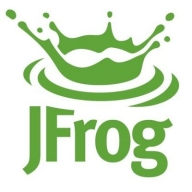

Sonatype Lifecycle and JFrog Xray compete in the software composition analysis realm. Sonatype has an edge in security focus and policy management, while JFrog Xray is favored for its integration and advanced reporting.
Features: Sonatype Lifecycle offers deep vulnerability analysis, extensive policy enforcement, and seamless integration with development environments. JFrog Xray provides real-time artifact scanning, DevSecOps pipeline support, and enhanced security alerts.
Room for Improvement: Sonatype could enhance its real-time integration capabilities, improve its reporting features, and expand its cloud compatibility. JFrog Xray could improve its user interface, reduce setup complexity, and enhance customization options for alerts and notifications.
Ease of Deployment and Customer Service: JFrog Xray offers flexible cloud and on-premise deployment, with comprehensive customer support and extensive documentation. Sonatype Lifecycle boasts straightforward installation and effective customer service but benefits less from deployment flexibility.
Pricing and ROI: Sonatype Lifecycle is competitively priced with a quick setup that promises a substantial ROI. JFrog Xray, while having higher initial costs, offers significant ROI through operational efficiencies and its robust feature set.
We have seen cost savings and efficiency improvements as we now know what happens in what was previously a black box.
When we need clarifications, we contact our account manager, and they arrange demos.
They are helpful when we raise any tickets.
It handles high availability at the database level, such as synchronizing JFrog repository servers without complicated configurations.
Sonatype Lifecycle is very stable, especially in the binary repository management use case for managing binary artifacts.
X-ray needs improvement in supporting more than one database, as it currently only supports PostgreSQL.
We also noticed a lack of detailed information for configuring Sonatype Lifecycle for high availability and data recovery.
The basic scanning capabilities come with Artifactory, however, curation requires additional licenses.
For larger numbers like our case with 1,000 user licenses, JFrog becomes much more cost-effective, roughly ten times cheaper than Sonatype.
The most valuable features of JFrog Xray are its curation capabilities, its native integration with Artifactory, scanning for vulnerabilities, and license compliance features.
The integration into our CICD pipeline enables us to continuously monitor code changes and identify new vulnerabilities.
The most valuable feature for us is Sonatype Lifecycle's capability in identifying vulnerabilities.


JFrog is on a mission to enable continuous updates through Liquid Software, empowering developers to code high-quality applications that securely flow to end-users with zero downtime. The world’s top brands such as Amazon, Facebook, Google, Netflix, Uber, VMware, and Spotify are among the 4500 companies that already depend on JFrog to manage binaries for their mission-critical applications. JFrog is a privately-held, global company, and is a proud sponsor of the Cloud Native Computing Foundation [CNCF].
If you are a team player and you care and you play to WIN, we have just the job you're looking for.
As we say at JFrog: "Once You Leap Forward You Won't Go Back!"
Sonatype Lifecycle is an open-source security and dependency management software that uses only one tool to automatically find open-source vulnerabilities at every stage of the System Development Life Cycle (SDLC). Users can now minimize security vulnerabilities, permitting organizations to enhance development workflow. Sonatype Lifecycle gives the user complete control over their software supply chain, allowing them to regain wasted time fighting risks in the SDLC. In addition, this software unifies the ability to define rules, actions, and policies that work best for your organizations and teams.
Sonatype Lifecycle allows users to help their teams discover threats before an attack has the chance to take place by examining a database of known vulnerabilities. With continuous monitoring at every stage of the development life cycle, Sonatype Lifecycle enables teams to build secure software. The solution allows users to utilize a complete automated solution within their existing workflows. Once a potential threat is identified, the solution’s policies will automatically rectify it.
Benefits of Open-source Security Monitoring
As cybersecurity attacks are on the rise, organizations are at constant risk for data breaches. Managing your software supply chain gets trickier as your organization grows, leaving many vulnerabilities exposed. With easily accessible source code that can be modified and shared freely, open-source monitoring gives users complete transparency. A community of professionals can inspect open-source code to ensure fewer bugs, and any open-source dependency vulnerability will be detected and fixed rapidly. Users can use open-source security monitoring to avoid attacks through automatic detection of potential threats and rectification immediately and automatically.
Reviews from Real Users
Sonatype Lifecycle software receives high praise from users for many reasons. Among them are the abilities to identify and rectify vulnerabilities at every stage of the SDLC, help with open-source governance, and minimize risk.
Michael E., senior enterprise architect at MIB Group, says "Some of the more profound features include the REST APIs. We tend to make use of those a lot. They also have a plugin for our CI/CD.”
R.S., senior architect at a insurance company, notes “Specifically features that have been good include:
• the email notifications
• the API, which has been good to work with for reporting, because we have some downstream reporting requirements
• that it's been really user-friendly to work with.”
"Its engine itself is most valuable in terms of the way it calculates and decides whether a security vulnerability exists or not. That's the most important thing. Its security is also pretty good, and its listing about the severities is also good," says Subham S., engineering tools and platform manager at BT - British Telecom.
We monitor all Software Composition Analysis (SCA) reviews to prevent fraudulent reviews and keep review quality high. We do not post reviews by company employees or direct competitors. We validate each review for authenticity via cross-reference with LinkedIn, and personal follow-up with the reviewer when necessary.